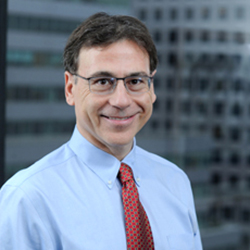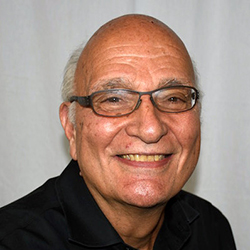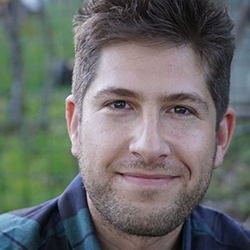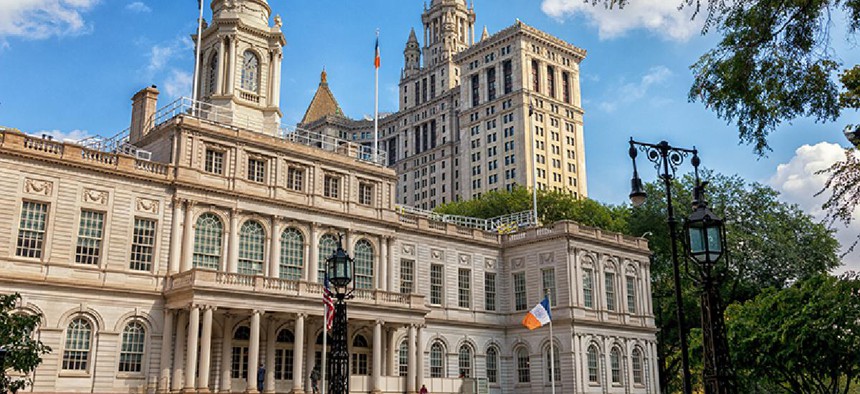Tonight is the first Democratic primary debate in the New York City mayoral race. However, Mayor Bill de Blasio will face only Sal Albanese, while three other Democratic candidates – Richard Bashner, Bob Gangi and Michael Tolkin – will not be allowed to participate.
The fundraising threshold to qualify for the debate is $174,225, according to the New York City Campaign Finance Board, which oversees the city’s official debates.
Bashner, a real estate attorney and member of Brooklyn Community Board 6, filed a lawsuit against the Campaign Finance Board over his exclusion from tonight’s contest. Gangi, the co-founder of the Police Reform Organizing Project, also criticized the city’s fundraising threshold, and promised to protest outside the debate venue at Symphony Space on Broadway.
RELATED: Who's who in the New York City mayoral race
And Tolkin, a tech entrepreneur who donated $175,000 of his own money to his campaign, was cleared to participate by the Campaign Finance Board after an appeal. But the final decision was left to the debate sponsors, who opted not to include him.
So City & State called up each of the three candidates on Wednesday with three debate questions of our own. Here are their ideas about addressing homelessness, fixing the subways and allegations of a pay-to-play culture at City Hall.
C&S: What concrete plan do you have for addressing homelessness?
 Richard Bashner: Today we will be distributing 25 of my ideas that you won’t hear at tonight’s mayoral debate. Many of them relate to homelessness, and the reason is that this mayor has been a weak and ineffective leader who cannot achieve his goals in so many ways but particularly on homelessness. He ran on a platform on which he promised to protect the most vulnerable New Yorkers, and instead we have a homelessness epidemic that is at an all-time high. We have almost 4,000 homeless men and women and children on the streets of New York City, almost a 40 percent increase from last year. 100,000 children in homeless shelters and he has been so distracted by corruption scandals, lobbyists and big money to attend to the nuts and bolts details of fixing the many problems that face us. Now I have specific proposals but first we have to get back to business and sit down and work together to address all of these problems.
Richard Bashner: Today we will be distributing 25 of my ideas that you won’t hear at tonight’s mayoral debate. Many of them relate to homelessness, and the reason is that this mayor has been a weak and ineffective leader who cannot achieve his goals in so many ways but particularly on homelessness. He ran on a platform on which he promised to protect the most vulnerable New Yorkers, and instead we have a homelessness epidemic that is at an all-time high. We have almost 4,000 homeless men and women and children on the streets of New York City, almost a 40 percent increase from last year. 100,000 children in homeless shelters and he has been so distracted by corruption scandals, lobbyists and big money to attend to the nuts and bolts details of fixing the many problems that face us. Now I have specific proposals but first we have to get back to business and sit down and work together to address all of these problems.
First I want to preserve existing housing by adding building inspectors, requiring landlords to correct building code violations more promptly, and summarizing open violations and fines on real estate tax bills to verify owners and lenders and improve compliance. I want to add a self-inspection system by tenants requiring building managers to accept photos of violations over the internet and coordinate faster repairs with tenants. This will help preserve our existing housing stock and prevent fewer people from becoming homeless. Next we need to get people through the system more quickly. The length of stay in a homeless system has increased by almost 50 percent. So we need to address the needs of homeless people on an individual basis.
We have three main groups: children and their families, single individuals and people with mental health issues. And they need to be addressed differently. The mayor has failed to build the trust necessary to build new homeless shelters and new affordable housing in the many neighborhoods that it needs to be built in in order to solve this problem. So, we need to expand funding for affordable housing and most importantly, we need to have a massive new building program to build new affordable housing on New York City Housing Authority properties. Have priority for NYCHA residents because otherwise they will not accept new buildings to take away their parking lots, playgrounds and other open areas. It has to include supportive senior housing with enhanced services and facilities because then residents can transition over time from their current apartments to naturally occurring retirement communities and that will free up big apartments for families.
We also need to create new and supportive mixed-use communal facilities to economically house and feed and provide better services not only to homeless families, but also to seniors and people with disabilities and most specifically, homeless families displaced from the surrounding neighborhoods or at schools. It’s very important that we take care of the people who are being displaced from their existing housing. They’re economic refugees. And if we had, for example, 4,000 Columbia students living on the streets, we would declare a state of emergency and deal with that immediately. But we don’t do that because we talk about the homeless as if they’re some other group and not deserving of our attention.
 Bob Gangi: Our primary focus will be to provide homes for homeless people. The de Blasio plan – the main thrust of it is to open 90 new shelters over the next five years, and they acknowledged when they announced the plan that it would reduce the homeless population by only 2,500 people over the next five years so it puts hardly a dent into the homeless problem in New York City. What we would concentrate on is working with community-based organizations to build, provide and maintain low income housing in inner city neighborhoods and we would make a commitment that the rents for those units would be affordable for the people who currently live in those communities. We would directly initiate the projects by the city to provide public housing. The basic reason for homelessness is lack of affordable housing, that’s what the research shows. So we would embark on a very serious and aggressive effort to provide affordable housing.
Bob Gangi: Our primary focus will be to provide homes for homeless people. The de Blasio plan – the main thrust of it is to open 90 new shelters over the next five years, and they acknowledged when they announced the plan that it would reduce the homeless population by only 2,500 people over the next five years so it puts hardly a dent into the homeless problem in New York City. What we would concentrate on is working with community-based organizations to build, provide and maintain low income housing in inner city neighborhoods and we would make a commitment that the rents for those units would be affordable for the people who currently live in those communities. We would directly initiate the projects by the city to provide public housing. The basic reason for homelessness is lack of affordable housing, that’s what the research shows. So we would embark on a very serious and aggressive effort to provide affordable housing.
The de Blasio plan to provide affordable housing, when you closely examine it, turns out that it’s not truly affordable housing. The units that are being built in the low-income communities are, for the most part, not actually affordable for the people living in those areas. So the main approach would be affordable housing in low-income communities in different parts of the city.
We would not work with big real estate, we would move profit-making companies from any of our initiatives to provide affordable housing. We would only work with local community groups and housing developers that are nonprofit and committing to preserving their communities. We would also initiate public works projects, working out of the city’s housing agency, parks department, department of transportation. And for the public works crews, working out of the city’s housing agencies. It would consist primarily of unemployed and underemployed people from the inner city communities and we will make those public housing crews available to the local housing groups that we will be depending on to provide affordable housing for low-income and homeless people.
 Michael Tolkin: Well, I think it’s important to highlight the challenges of our homelessness problem. And it is a systemic problem that is fundamentally rooted in our economy, which is continuing to favor the rich and is really hurting the people without anything. The first thing, and the most important thing that I plan on doing is implementing our economic resilience plan, which is an approach to immediately getting more cash in the hands of the people who need it the most, as well as setting the foundation for long-term economic growth. And more important than just growth, growth in a fair way that benefits all New Yorkers. So we’re going to be putting forth a number of different proposals ranging from investing in new infrastructure, to investing in our creative industries – which will be a disproportionate piece of economic growth – to preparing all of our people, young and old, for jobs of the future.
Michael Tolkin: Well, I think it’s important to highlight the challenges of our homelessness problem. And it is a systemic problem that is fundamentally rooted in our economy, which is continuing to favor the rich and is really hurting the people without anything. The first thing, and the most important thing that I plan on doing is implementing our economic resilience plan, which is an approach to immediately getting more cash in the hands of the people who need it the most, as well as setting the foundation for long-term economic growth. And more important than just growth, growth in a fair way that benefits all New Yorkers. So we’re going to be putting forth a number of different proposals ranging from investing in new infrastructure, to investing in our creative industries – which will be a disproportionate piece of economic growth – to preparing all of our people, young and old, for jobs of the future.
To discuss homelessness specifically, I actually spent a couple of nights on the street to firsthand experience the life of someone who’s living on the street. And I’ve met with plenty of homeless people. It is a massive challenge because it’s not just about getting people off the streets. They need tremendous help and support to get back on their feet. So we’re putting forth what we call an NYC Life plan where we’ll be creating end-to-end rehabilitation centers. Bringing people into safe, interim housing, supporting them with mental health services – a third of our homeless population has some form of mental illness. Giving them comprehensive physical care and most important, equipping them with job skills and training so that they can reintegrate themselves back into society in a healthy and sustainable way.
RELATED: Key 2017 New York City Council primaries by district
C&S: How will you address the worsening situation on the city’s subway system?
Bashner: Again, the mayor is responsible for everything that happens in the city of New York. If not directly responsible because he has direct oversight over it, then he is responsible in the same way that Harry Truman said the buck stops here. So, the mayor needs to have a plan for addressing the subways and improving not only the condition of the subways, but its future health. We need to replace signals, we need a massive program of investment and where is that money going to come from? We need to have a congestion pricing scheme. There’s no reason why people who are driving over bridges shouldn’t pay at least $2.75 every time they go over the bridge, the same way anyone entering Manhattan pays a subway fare.
And we need to consider other sources of revenue as well as congestion pricing. We used to have a commuter tax. There are many people who commute into New York City; that’s something we should be looking for at the state level. And another thing we can do would be to propose a carbon tax on buildings which would reduce energy usage and plow that money back into the subway system to help improve it.
Gangi: We would take a couple of steps. One, we would publicly announce our determination to cooperate with the MTA and with Governor Cuomo on coming up with a workable plan. We would walk back from the de Blasio approach, which is mainly to point fingers at the MTA or to the governor and to try to absolve him and his administration of any responsibility. As the mayor of New York City, and as obviously the main political leader of New York City, we won’t get stuck in sort of the weeds of who’s actually responsible. As a leader of New York City, we’re responsible with making sure the subways and the bus services are not only sufficient, but of a high quality. And the kind of things that we would emphasize, and hopefully in concert with the governor, would be the need to upgrade the current signaling system, the need to add hundreds if not thousands of new busses and new subways cars.
We would also make the public works crews available that I mentioned in response to the first question to the MTA to do work in our subways. Cleaning up our subways, repairing the subways as much as possible. Making the subways and the subway stations and our busses welcome places for New Yorkers. And again, those public works crews would consist primarily of unemployed and underemployed people from our inner cities that value the public works projects would be not only that they would provide useful services to the city, in this case upgrading and making much cleaner our subways and the busses, but it would also be useful work experience and we’d make sure that we pay the people in the public works crews a livable wage.
Tolkin: Again, this is a massive, systemic problem that needs to be addressed on a number of different fronts. We’re proposing a $25 billion capital improvement plan where we will be investing in new infrastructure ranging from new tracks, to new stations, we’re upgrading stations with heating and air conditioning, to new cars, new signals – the entire system needs to be upgraded. And the days of Band-Aids and quick fixes are over. It doesn’t work. We are taking a long-term view with respect to how we upgrade our transportation system in a way that improves mobility for all New Yorkers and ultimately will drive economic growth.
Beyond that, we’re exploring other loads of transit including point-to-point transit with our NYC Rides proposal, which is sort of like a public version of Uber. So, we will have a variety of ways to help people move around the city. Particularly as we are going to be taking down subway lines to fix and repair them, we’re going to need to give people other ways of getting to and from work, to and from school and to and from other entertainment options.
The other long-term proposal that we are in the process of developing is a new, drone-based, what we call sky bus, which will facilitate interborough transit in a much more substantial way. So, you’ll be able to get from Staten Island to the Bronx in under 20 minutes. Again, this isn’t going to happen overnight. We’re looking for 2030, but what we want is to be developing entirely new ways of moving around our city. We need to be fighting for, investing in and setting the foundation today, for the future transit options of tomorrow.
RELATED: Who are John Faso's Democratic challengers?
C&S: Mayor Bill de Blasio has been under scrutiny for using his personal email for government business and for allegations of promoting a pay-to-play environment. Does City Hall need to be cleaned up, and if so, how specifically will you do that?
Bashner: Well, City Hall needs to be cleaned up. The city has been for sale under Mayor de Blasio. Not only directly with campaign contributions to the Campaign for One New York, which exceeded $100,000 in many cases, it evaded the normal limits on contributions during the mayoral primary which is $4,950. Instead he accepted contributions in excess of $100,000. We need to reduce the limits of contributions and we need to make sure that those limits apply all across the board so that the mayor can’t evade the rules as this mayor has done.
We also need to make sure that everything is above board, transparent and open, and not have a parallel email system that evades scrutiny. And then stonewall Freedom of Information Law requests that seek the information necessary. We need to have open government. We need to shine a light on all government and the details of how it is managed.
And most importantly, we need to hire people who are not corrupt. We need to hire people who will make decisions that are in the best interest of all New Yorkers and do what’s right, not what they’re being paid to do by some lobbyist. And we definitely have to end the revolving door in which recent members of the administration go and work for the very lobbyists who have been influencing the system as has recently been done by someone who’s went to work for the Capalino+Company. This is atrocious and it needs to end.
Gangi: There’s no question that the de Blasio administration engaged in pay-for-play, engaged in practices that were if not outright illegal, if they couldn’t be proved, were borderline illegal. And that there was a culture, and there is a culture in City Hall under de Blasio that they play pretty casual and cavalier about what rules they follow and when they break those rules or come very close to crossing the line in regard to those rules, they’ll get defensive and they’ll present rationales and excuses that almost insult our intelligence.
There have been long newspaper articles, I’m thinking of one in particular, in The New York Times, which documented email-by-email the specifics of the pay-to-play practices of the de Blasio administration. And then he and his spokesman casually defend the practice, saying we’re just providing services that we would provide for any New Yorker who had a legitimate grievance against a bureaucracy.
Our campaign hasn’t received money from any major donors. And as we continue the campaign, we’re not planning to reach out to major donors. So we will be determined to abide substantially and specifically by the rule of ethics that we also apply to all the commissioners and high-level people in our government that the responses on the part of the government agencies will not in any way, either by appearance or in practice, favor the wealthy people and the well-connected people in New York City. We will be determined to make the government from the police department, to the housing agencies, the health agencies, the Department of Consumer Affairs, even our jails, responsive to the needs, the desires and the aspirations of people, who for the most part, have been overlooked by city government. People who are low-income, black or brown people from inner cities and people from marginalized communities.
Tolkin: The short answer is yes. There’s tremendous corruption, I think, throughout city government and what we’re doing is nothing short of revolutionary. We have proposed an entirely new organizational design for the city. I promptly got through every single department and agency, evaluated their objectives, their mandates. We’ve proposed merging departments, cutting departments, creating new departments and the net result is an organizational structure that is simpler, it’s leaner, and it’s better aligned with our long-term strategic objectives and our long-term strategic plan, which includes five tiers: quality of life, economy, social justice, sustainability and governance. So when it comes to reframing government around the right values, the words that I keep on using are compassion and empathy. That is what we need within government, more so than anything else.
And if you have empathy, it’s much easier to put in place the policies and initiatives that help others, as opposed to supporting your own interests and maintaining power. I think for too long, the machine government has worked to protect itself as opposed to opening up and integrating the people in a much more meaningful way. So one of the things that we’re going to be doing is setting up a board of taxpayers, by way of example, that allows our taxpayers to have greater visibility to our budgeting process, greater input into our budgeting process, and ongoing engagement throughout the year with regular check-ins and a dashboard so that people can check in online where we’re at in terms of our budget, where we’re at in terms of our progress with the initiatives, and keep us accountable.
NEXT STORY: Sheridan Expressway


